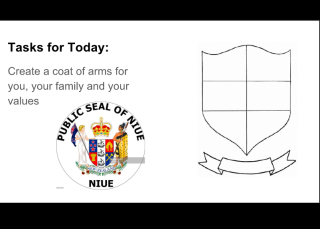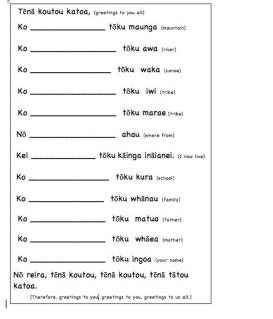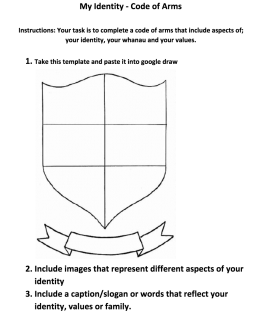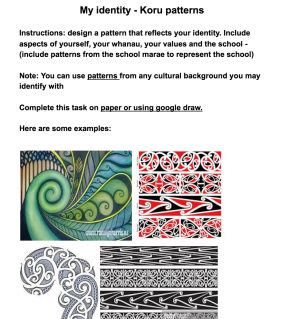In my Year 9 Social Studies class as part of our unit on sustainability we are looking at culture and identity. As this lesson was being taught early into Term 1 – I am still getting to know the students in my class. The Year 9 unit plan included a particular lesson where students looked at their own identity by creating a “Code of Arms.”
As culture and identity is something I see as closely related I felt that a “Code of Arms” was a particularly euro-centric approach to learning about identity. This I felt was particularly problematic approach to take with a class of students who were mostly from Māori and Pasifika backgrounds. Especially considering within this particular unit of work we were attempting to demonstrate the value in sustaining cultures. I decided this was a useful opportunity to give students some choice in which task they would like to use to consider their own identities.
I initially thought giving 9tgn the option creating a pepeha to consider their identity was a good idea for a number of reasons. Firstly, producing a pepeha fitted nicely with the LO’s for this lesson of considering identity but was also a way I could use te reo Māori and tikanga in my classroom in a way that was relevant. I also felt this was an opportunity to include the cultural background of my Māori students in the classroom environment.
However, I knew that 9tgn were also doing their pepeha’s in their Te reo Māori class. For this reason I went to see their Te reo teacher to collaborate on this particular lesson. I didn’t want to teach students to do their pepeha in a different way nor did I want to interfere with what they were learning in another subject. Their Te reo teacher was supportive of me introducing a pepeha into the social studies lesson but also suggested that I could give the option of producing a pattern as a way to express identity. She explained this was something that had been learning and using this in Social Studies could then further reinforce this learning. We also discussed how the pattern could be something that my Pasifika students could relate to aswell.
I decided to give 9tgn three different options to express their identity; a pepeha, a code of arms or a koru pattern.
Option 1: Pepeha template
Option 2: Code of Arms
Option 3: Koru Pattern
I found this lesson to be particularly positive for a number of reasons. Firstly, it seemed students in 9tgn really appreciated having choice. This was expressed through student voice at the end of the lesson. I realised this was particularly important to provide this for 9tgn whenever possible as I noted that students were significantly more engaged in the task when they were given an element of choice. Prior to this lesson I had noticed that work completion was a bit of an issue with this class in particular. However, the majority of the class were committed to finishing their pattern, pepeha or code of arms during the double period. Those that hadn’t finished seemed to be sending completed work to me after school and so were obviously committed to finishing off the work for homework. To me this is a positive indication that providing student choice and options that were culturally responsive to learners in my classroom was worth the effort as students were far more engaged in the learning process.




Sounds like an engaging lesson Renee! Although having options takes some additional behind the scenes prep, I do agree our students respond well to choice. I feel many of my students, and I would assume some of your students too, still feel that the teacher is the fountain of knowledge and the person in position of power. By giving students choice, to explore their culture and backgrounds, really shows how they are a source of knowledge! Would love to see students creations – have they posted onto their blogs? Looking forward to reading future posts 🙂
LikeLike